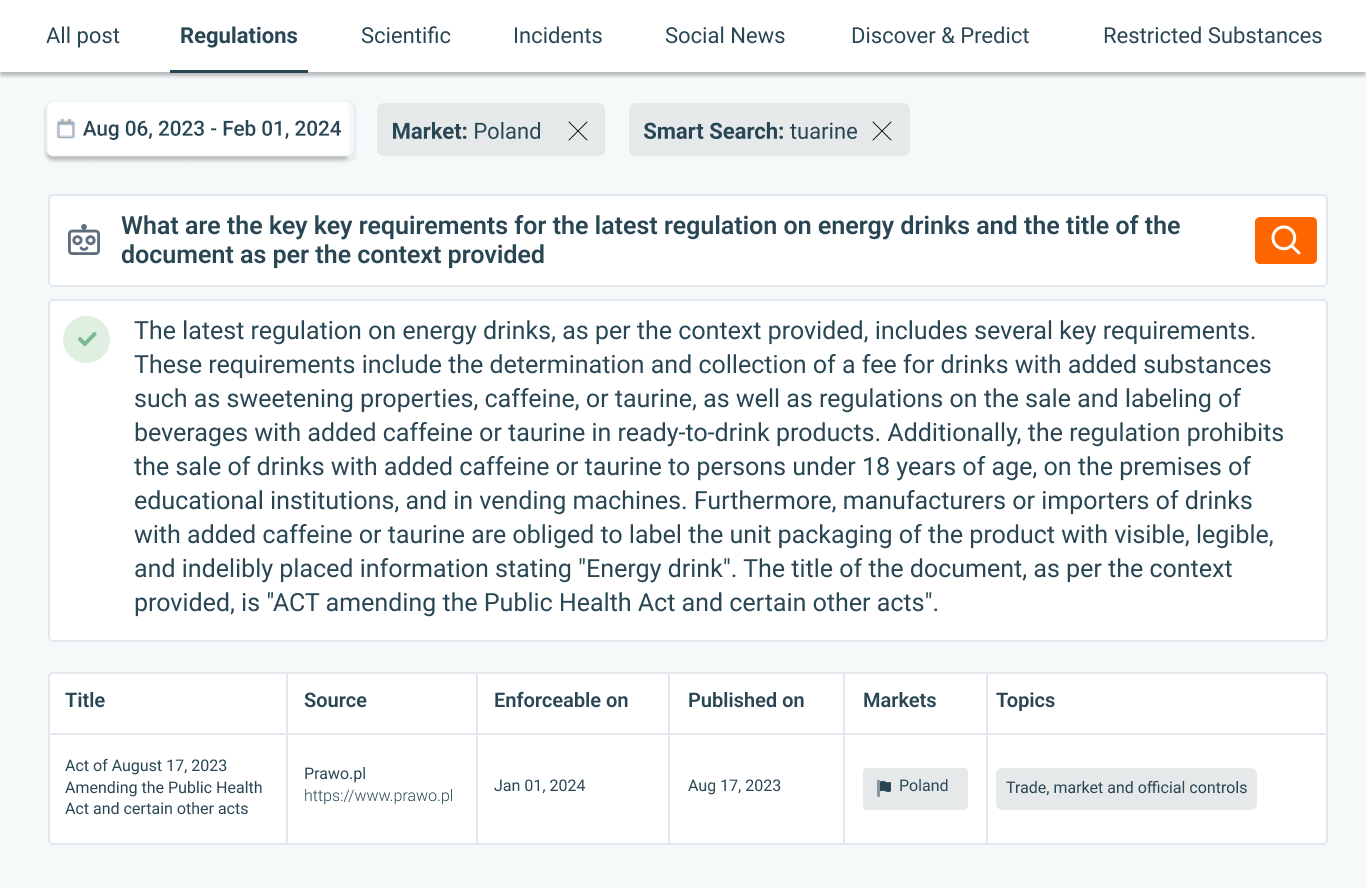When it comes to microbiological hazards in ready-to-eat (RTE) foods, Listeria monocytogenes remains the pathogen that keeps regulators, retailers, and QA managers awake at night. Unlike many foodborne bacteria, Listeria can survive — and even grow — at refrigeration temperatures, making it a particular challenge in products with extended shelf life. Outbreaks are relatively rare compared to Salmonella or E. coli, but their severity is disproportionately high: listeriosis carries one of the highest fatality rates among foodborne diseases in the EU.
Against this backdrop, the European Commission adopted Regulation (EU) 2024/2895, amending the long-standing microbiological criteria in Regulation (EC) No 2073/2005. The changes, enforceable from 1 July 2026, mark a significant tightening of the rules for RTE foods that can support the growth of Listeria.
This notification was timely identified and is available to users through the SGS Digicomply Regulatory Agenda. It offers a comprehensive list of regulatory deadlines, including historical and upcoming dates, with detailed insights and analysis. Explore the demo to try this tool in action.
Why Now? The Rising Listeriosis Trend
EFSA’s most recent zoonoses report showed a 15.9% increase in listeriosis cases between 2021 and 2022, with deaths reaching one of the highest numbers in the past decade. These are not isolated spikes: the trend has been upwards, and it highlights the persistent vulnerability of high-risk groups — infants, elderly, and immunocompromised individuals.
While existing criteria allowed for up to 100 cfu/g at the end of shelf life, provided operators could prove growth would remain below that threshold, the rise in cases has prompted regulators to re-examine whether that approach provides sufficient protection across the entire food chain.
What Changes Under the New Regulation
From July 2026, the bar is higher.
-
Default rule: RTE foods able to support Listeria growth must show “not detected in 25 g” throughout their shelf life, unless operators can robustly demonstrate (to competent authorities) that levels will not exceed 100 cfu/g before expiry.
-
Wider scope: This criterion now applies not just before products leave the control of the producer, but also once they are on the market. In other words, responsibility extends beyond factory gates into the distribution phase.
-
Testing clarity: The regulation updates Annex I of Reg. 2073/2005 with revised sampling and interpretation criteria, ensuring uniformity in enforcement across Member States.
In practice, this shifts the burden of proof firmly onto food business operators (FBOs). It is no longer enough to rely on predictive shelf-life models; companies will need robust challenge testing, shelf-life validation, and continuous monitoring to demonstrate compliance.
Implications for Food Businesses
For QA and regulatory teams, this means rethinking existing Listeria management programs:
-
Shelf-life studies will become non-negotiable. If you want to rely on the 100 cfu/g threshold, you need documented scientific evidence. This requires investment in lab trials and predictive modelling.
-
Stricter environmental monitoring. Since detection of Listeria in finished product could render batches “unsatisfactory,” preventive control in the processing environment will be critical. Expect greater scrutiny of sanitation, zoning, and air-handling in chilled facilities.
-
Retail and distribution under the microscope. The new rules apply to food “placed on the market,” which means that retailers and logistics providers are now more directly implicated. Maintaining cold chain integrity and preventing post-production contamination will be essential.
The regulation gives industry until July 2026 to adapt, but the changes are not cosmetic. They reflect a regulatory philosophy shift: Listeria is to be controlled proactively across the entire food chain, not tolerated up to a level unless proven safe.
A Broader Regulatory Trend
This move also fits into a wider pattern: EU food law increasingly emphasizes preventive and risk-based approaches. From allergen labeling to pesticide residues, the Commission is raising expectations that food operators take active responsibility for safety outcomes, not just for compliance at the factory gate.
For global exporters, the implications go further. Many non-EU markets take cues from Brussels, and companies supplying RTE products into Europe will need to align with the stricter standards or risk exclusion.
Looking Ahead
As of 2026, any RTE product that can support Listeria growth will need a new level of assurance. For FBOs, the key questions are:
-
Do our validation studies prove compliance under real distribution conditions?
-
Are our environmental monitoring programs aggressive enough to detect early signs of contamination?
-
How will we manage regulatory inspections and demonstrate confidence in shelf-life claims?
The regulation does not spell the end of the 100 cfu/g concept — but it narrows the window for using it. For many businesses, the practical effect will be designing processes and products that achieve “not detected” across the board.
For QA and regulatory professionals, this is not just a compliance challenge, but a strategic one: proving that RTE foods can remain safe in a context where consumer groups and authorities alike are becoming less tolerant of risk.
Sources
-
Commission Regulation (EU) 2024/2895 of 20 November 2024 amending Regulation (EC) No 2073/2005 as regards Listeria monocytogenes (OJ L 2024/2895, 21.11.2024)
-
Regulation (EC) No 2073/2005 on microbiological criteria for foodstuffs
-
EFSA & ECDC, The European Union One Health 2022 Zoonoses Report (EFSA Journal 2023;21(12):8442)
Explore SGS Digicomply’s Regulatory Intelligence Hub
SGS Digicomply’s Regulatory Intelligence Hub offers a powerful solution for managing regulatory complexities across 150+ jurisdictions. With AI-driven research tools, easy-to-read regulatory guides, change monitoring, and an interactive agenda, the platform empowers teams to make informed, timely decisions. Whether you’re tracking new rules or comparing global standards, SGS Digicomply is your essential partner for proactive compliance. See how it works in our demo.







.webp?width=1644&height=1254&name=Food%20Safety%20Dashboard%201%20(1).webp)
